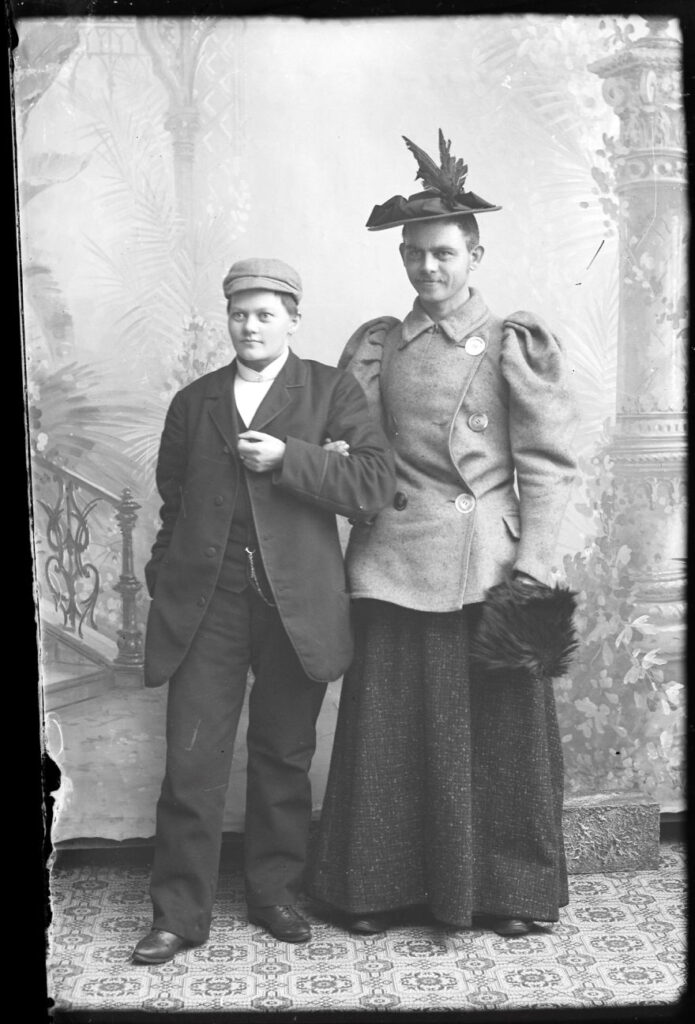
Mary Høeg & Bolette Berg in the Boat
Artist: Mary Høeg
Media: Photography
Date & Location: c. 1895-1903, Horton, Norway
Where can I see this artwork?: Preus Museum, Norway
Significance to Queer Art History
Mary Høeg was a Norwegian suffragette and photographer. This is a photograph (described to me as an early “selfie of sorts”) of her and her partner, Bolette Berg. It is part of a private collection of her photographs, which subvert cis-heteronormative expectations of portraiture, and which were labelled ‘private’ when they came to the Preus Museum. The photographs Høeg sold to the public were primarily landscapes, and they were sold at ‘Berg and Høeg photography studio’ in Horten, Norway.
Digitized reproductions of her private photos also beg questions of the ethics of reproducing and sharing art works not created for public display.
Would she have minded? Could she have imagined such wide-spread access? Does the importance of archiving queer art works justify their reproduction?

c. 1895-1903. The Preus museum collection.
Resources
Preus Museum. “Bolette Berg and Marie Høeg.” accessed 07/29/20.
https://www.preusmuseum.no/eng/Discover-the-Collections/Photographers/Bolette-Berg-and-Marie-Hoeeg


